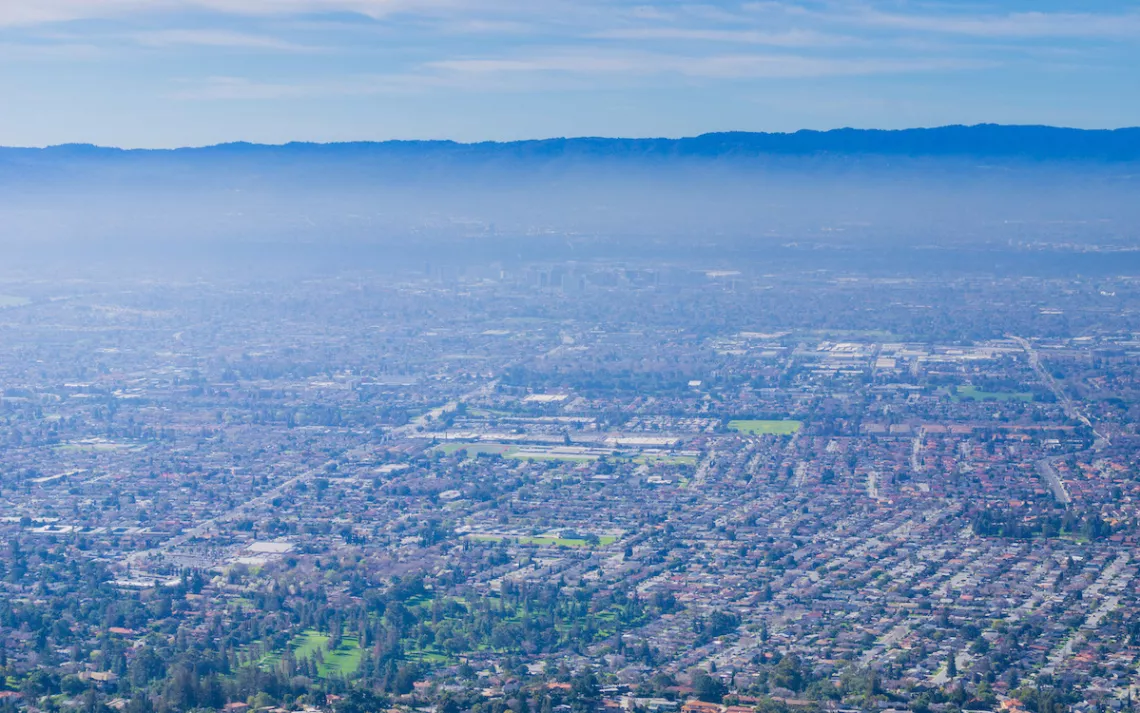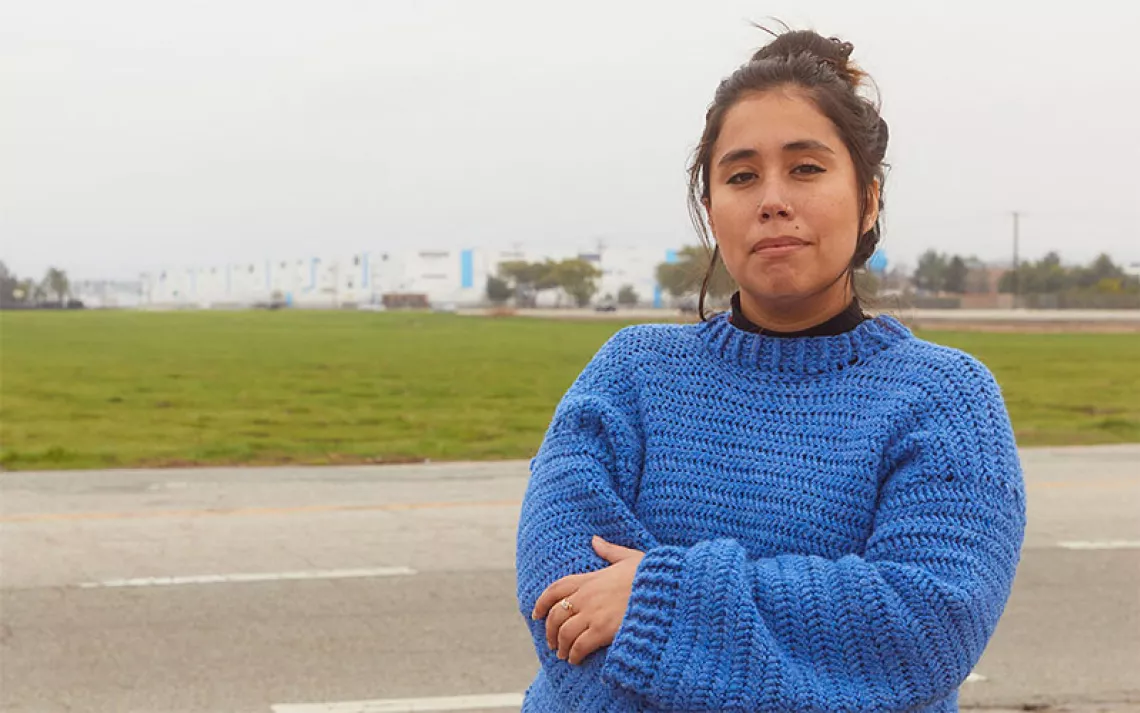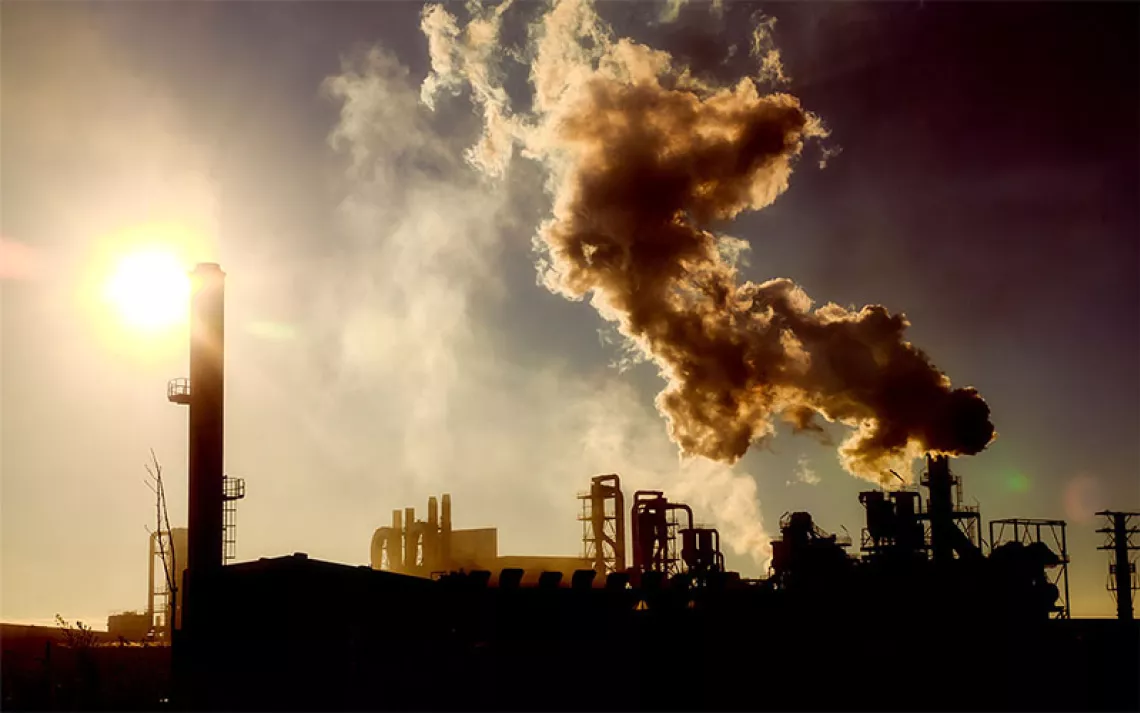The State of the Air Is Worsening as Climate Impacts Multiply
Many US cities have poor air, according to the American Lung Association

Photo by Andrei Stanescu/iStock
Few aspects of day-to-day life are easier to take for granted than the air we breathe. Yet for residents in many cities across the United States, dirty air is becoming a new normal as climate change exacerbates poor air quality, with dire consequences for the most vulnerable residents, according to the American Lung Association’s 20th-annual State of the Air report.
The report, released today, is a comprehensive examination of air pollution data, including ozone and particle pollution levels, collected at air monitoring sites across the United States. Each year the American Lung Association (ALA) processes that data into three scorecards that rank pollution from year-round particles, short-term particles, and ozone in communities nationwide.
While many communities experienced an improvement in air quality between 2000 and 2019—thanks in part to the Clean Air Act—this year’s report paints a grim picture for many other locales. The number of people breathing dirty air nationwide increased to 141 million (compared with 125 million and 133 million in the 2017 and 2018 reports, respectively). More than four in 10 Americans live in a county that has unhealthy ozone and/or particle pollution. Approximately 20 million people live in counties that ranked poorly on all three of the ALA’s scorecards.
The biggest difference between this year’s report and its predecessors?
“What we’re seeing in this year’s report more acutely is impacts on air quality from climate change,” Paul Billings, the national senior vice president for advocacy at the American Lung Association, told Sierra. “Eight of our cities suffered the most short-term particular pollution we’ve ever seen, and we attributed those spikes largely to wildfires.”
The years covered in the current report, 2015 to 2017, were the hottest on record globally and featured some of the most devastating wildfires ever recorded in the United States. Warmer temperatures create conditions that are more conducive for the formation of ozone, while hotter weather and changes in rainfall patterns fuel more intense wildfires, a major source of air pollution. Twenty of the 26 most polluted cities had spikes in particle pollution, many of those attributable to wildfires. “High ozone days and spikes in particle pollution zoomed, putting millions more people at risk and adding challenges to the work cities are doing across the nation to clean up,” according to the report.
“Because of climate change, we’re seeing an erosion in the progress we’ve been making to reduce the burden of air pollution,” Billings said. “We’re also seeing an uptick in ozone levels as well. Climate change is making it harder to clean up air pollution, and there are higher levels of it that harm health.”
Los Angeles held on to its rank as the number one most ozone-polluted city in the United States—a ranking it has held in all but one of the ALA’s 20 reports. Overall, ozone pollution worsened across the United States, including in some of the country’s biggest metropolitan areas, such as San Diego (#6 for ozone pollution), New York (#10), and Denver (#12).
Three cities in California rank in the top five most polluted for short-term particle pollution: Bakersfield (#1), Fresno-Madera-Hanford (#2), and San Jose–San Francisco–Oakland (#4).
Eight cities had the most pollution ever recorded there: Fairbanks, Alaska; Missoula, Montana; Yakima, Washington; Spokane–Spokane Valley–Coeur d’Alene, Washington and Idaho; Santa Maria–Santa Barbara, California; Salinas, California; Bend-Prineville, Oregon; and Bismarck, North Dakota.
Ozone and particle pollution pose a serious risk for children under the age of 18 and seniors over 65 and those living in low-income communities. The report cites a 2006 study linking exposure to high ozone levels to a type of cardiac arrhythmia that can increase the risk for premature death or stroke; a French study found that exposure to elevated levels of ozone for just one or two days can increase the risk of heart attack for middle-aged adults without heart disease.
The health effects from long-term exposure can also be severe. Chronic exposure to ozone can increase the likelihood of childhood asthma and decreased lung function in newborns, with children from low-income families more likely to need hospitalization. Particle pollution of the kind that is emitted by dirty trucks and wildfires can also lead to severe health consequences for children, people with low incomes, and people who work or recreate outdoors, among others.
Residents in Cheyenne, Wyoming; Kahului–Wailuku–Lahaina, Hawaii; and Honolulu can literally breathe a sigh of relief after their cities tied for the #1 ranking for cleanest US cities for year-round particle pollution. For ozone pollution, La Paz, Arizona, and Kauai took the top slots of the 25 cleanest counties for year-round pollution.
The report also documents improvements in air quality since 1970 and finds that air pollution emissions have dropped during that time. Even so, the Trump administration, first under disgraced former EPA chief Scott Pruitt and now EPA chief Andrew Wheeler, has attempted to weaken the scientific review process under the Clean Air Act and roll back clean air protections. State of the Air cites seven threats to the nation’s air quality and includes among them the Trump administration’s effort to roll back the Clean Power Plan, the Obama administration’s program for cleaning up carbon pollution from the nation’s power grid, as well as efforts to remove limits on methane and other emissions from oil and gas operations and a proposed rollback of clean car standards.
Billings said that people need to put pressure on their elected officials to support the Clean Air Act and require the cleanup of polluting sources. Individuals can reduce their exposure to elevated levels of air pollution by paying attention to the Air Quality Index and not exercise during days of higher air pollution.
“The stakes are literally the air that you breathe,” Billings said. “If we don’t continue to address criteria pollutants, people will suffer. If we don’t address climate change, people will suffer.”
 The Magazine of The Sierra Club
The Magazine of The Sierra Club



